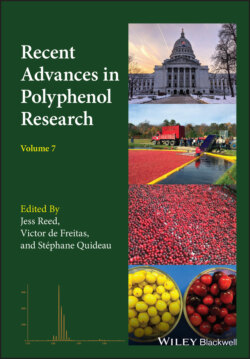Читать книгу Recent Advances in Polyphenol Research - Группа авторов - Страница 45
3.1 Introduction
ОглавлениеPolyphenols, ubiquitous and exceptionally human health–relevant plant‐derived compounds, have had a central role in ethnomedicine (traditional herbal medicine) and subsistence diets throughout history, even prerecorded history (Buttriss 2012; Schmidt and Klaser Cheng 2017). Foraging wild edible plants for foods and therapeutic applications is an ancient tradition that was considered obsolescent by most modern urban consumers, but now is enjoying a resurgence in interest. Thanks to some new insights into the composition and resiliency of endemic wild plants, and the quest for novel flavors and textures—especially in niche, fine dining establishments—wild foraging has become “cool” again. Foraged cuisine and indigenous ingredients are coveted, trendy options in high‐end restaurants, where the tannic astringency of wildcrafted leaves and fruits can complement blander foods or flavor botanical‐infused gins and vodkas, and consumers are keen to experience new foods that they perceive as healthier, natural, and unadulterated (Reyes‐Garcia et al. 2015; Schatzker 2015; Soukand 2016; Sebag‐Montefiore 2017; Pinela et al. 2017). But what is the real history of human use for polyphenol‐rich biologically active edible wild plants? Where were they discovered and which species were preferentially targeted as medicinally relevant?
